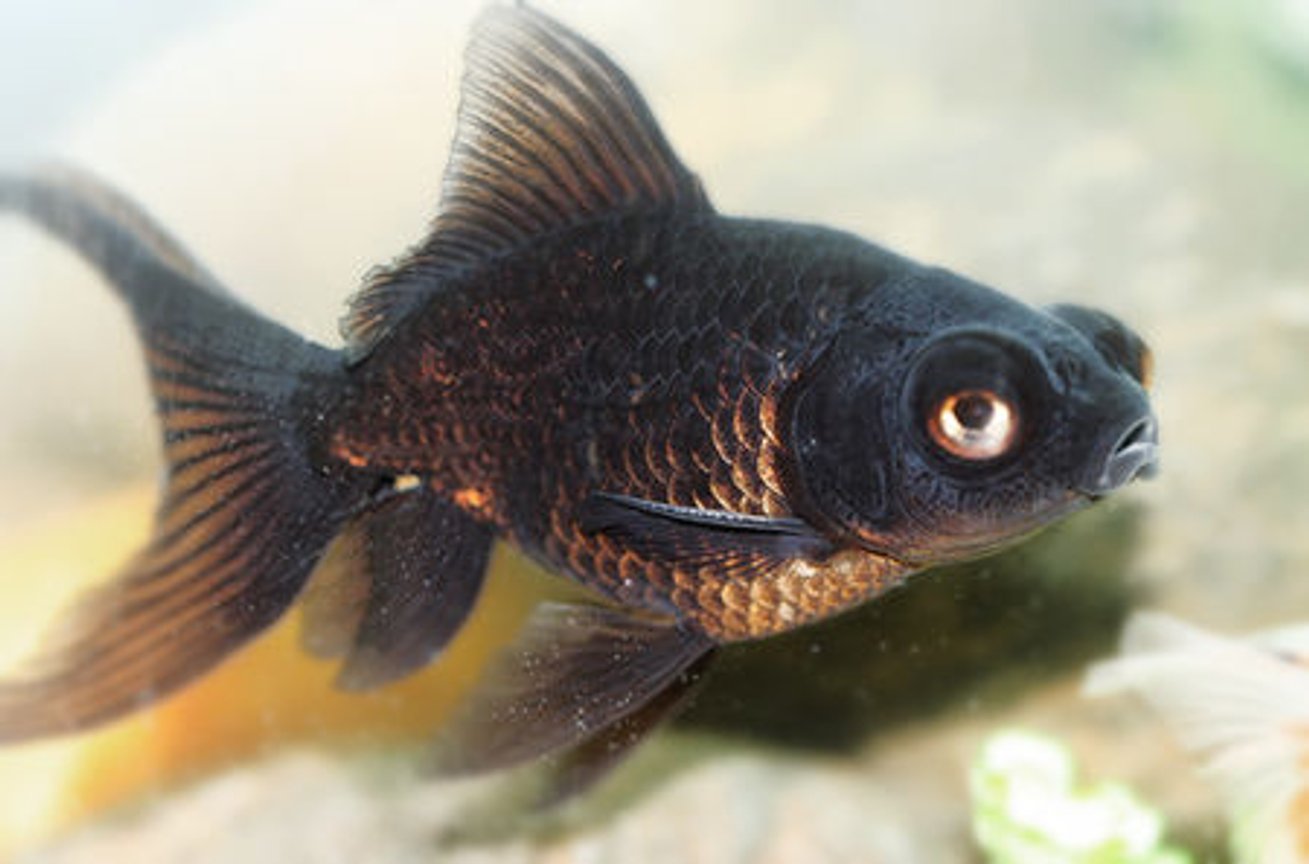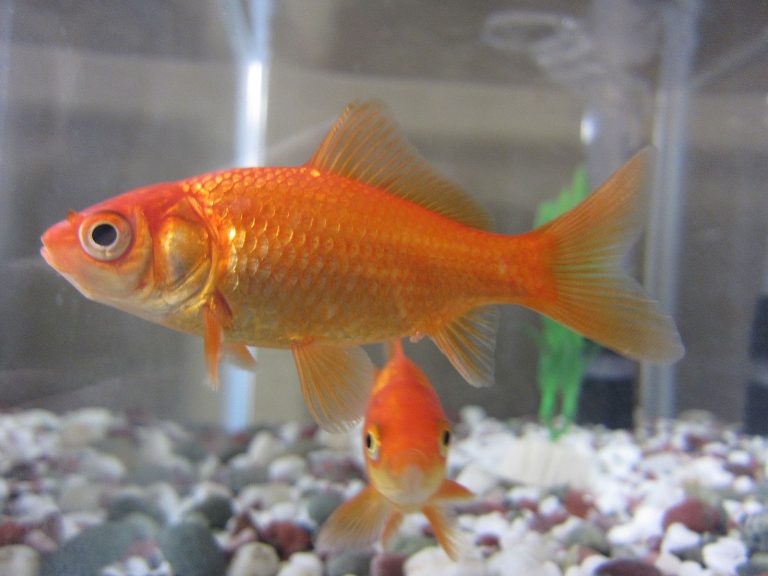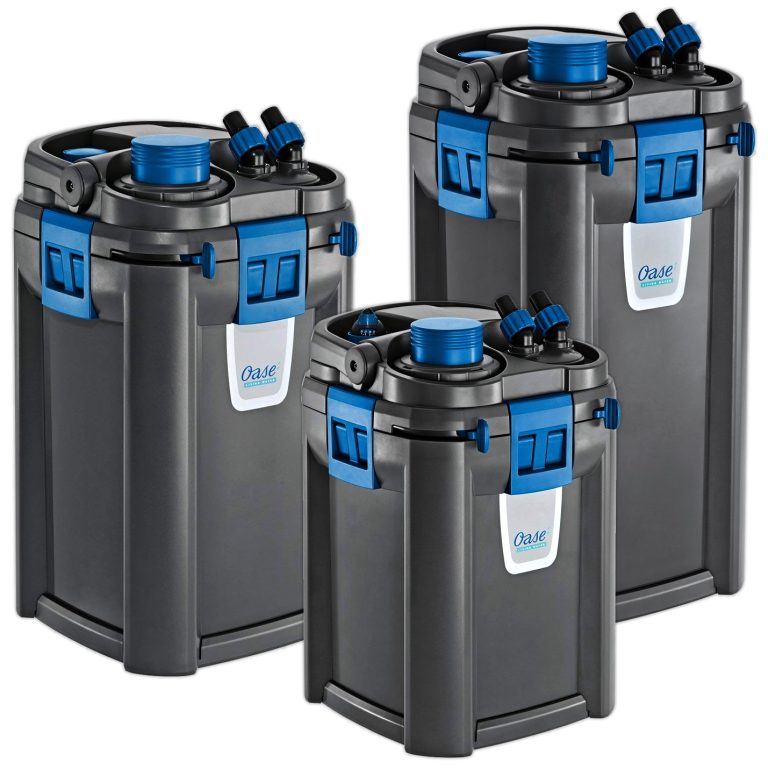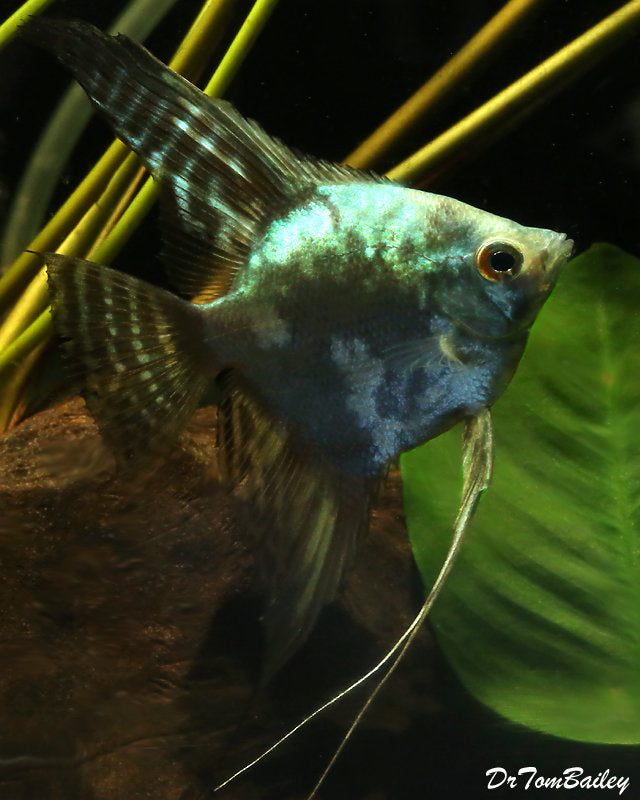Black Moor Goldfish
Goldfish are one of the most popular types of pet fish, and within the goldfish family, the black moor goldfish stands out as an intriguing and visually striking variety. With its distinctive look and fascinating characteristics, the black moor goldfish is a favorite among fish enthusiasts. In this article, we will explore everything you need to know about the black moor goldfish, from its appearance and care requirements to its behavior and potential health issues.
What are Black Moor Goldfish?
Black moor goldfish (Carassius auratus) are a type of fancy goldfish known for their unique appearance. They have a round, slightly chubby body shape with bulging eyes and flowing fins. The most distinctive feature of the black moor goldfish is its velvety, deep black coloration, which covers its entire body.
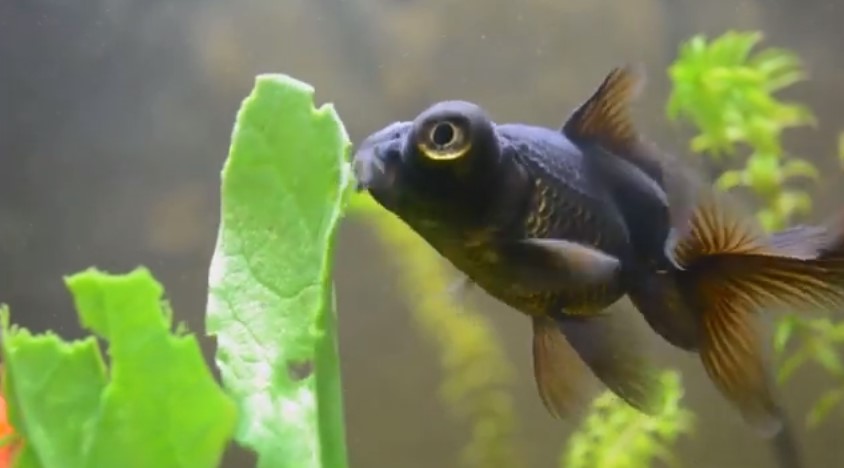
Appearance and Physical Characteristics
The black moor goldfish is easily recognizable due to its velvety black color and protruding eyes. Let’s delve deeper into its appearance and physical characteristics:
1. Body Shape: Black moor goldfish have a round body shape, somewhat resembling a plump tennis ball. Their body is compact and lacks the slender elongation seen in other goldfish varieties.
2. Coloration: As the name suggests, black moor goldfish are entirely black in color. However, some individuals may exhibit a hint of dark gray or deep blue on their fins or scales.
3. Eyes: One of the most striking features of the black moor goldfish is its protruding eyes. These eyes have a telescope-like appearance and are typically round and large. They can be black or sometimes red, depending on the individual fish.
4. Fins: The fins of black moor goldfish are long and flowing. Their anal and dorsal fins are often erect, while their pectoral and pelvic fins are delicate and feathery.
Habitat Requirements and Care
To provide the best living conditions for your black moor goldfish, it’s essential to understand their habitat requirements. Here are some key factors to consider when caring for your black moor goldfish:
1. Tank Size: Black moor goldfish require ample space to swim and thrive. Ideally, a single black moor goldfish should be housed in a tank with a minimum capacity of 20 gallons. Larger tanks are even better, as they provide more swimming room and help maintain water quality.
2. Water Temperature and Quality: Black moor goldfish are hardy and can tolerate a wide range of water temperatures. However, a temperature between 65°F and 75°F (18°C – 24°C) is considered ideal. It’s crucial to maintain proper water quality by regularly testing and monitoring parameters such as ammonia, nitrite, and nitrate levels.
3. Filtration and Aeration: A high-quality filtration system is essential for keeping the water in the tank clean and free from impurities. Black moor goldfish produce a significant amount of waste, so a strong filtration system is necessary to maintain optimal water quality. Additionally, providing adequate aeration through an air pump or a bubbler helps ensure oxygenation of the water.
4. Tank Decorations: Black moor goldfish are relatively clumsy swimmers, so it’s important to create a tank environment with minimal obstacles to prevent injury. Smooth, rounded decorations and soft plants are ideal choices to minimize the risk of your goldfish getting caught or injured.
5. Feeding: Proper nutrition is crucial for the health and well-being of your black moor goldfish. They are omnivores and should be fed a balanced diet of high-quality goldfish pellets or flakes, supplemented with occasional treats like freeze-dried or frozen brine shrimp and bloodworms. It’s important not to overfeed them, as obesity can lead to various health problems.
Behavior and Temperament
Understanding the behavior and temperament of black moor goldfish is essential for providing them with a suitable environment and companions. Here are some insights into their behavior:
1. Social Nature: Black moor goldfish are generally peaceful and social fish. They can be kept either in a group of black moor goldfish or with other compatible goldfish varieties in a community tank.
2. Aggression: While black moor goldfish are typically peaceful, they can occasionally display territorial behavior, especially during breeding seasons. It’s essential to provide them with ample space and hiding spots to minimize aggression.
3. Swimming Patterns: Due to their round body shape and protruding eyes, black moor goldfish have a slightly impaired vision. This can affect their swimming patterns, making them slower and less agile compared to other goldfish varieties.
4. Interaction with Humans: Black moor goldfish can recognize their owners and may become accustomed to being hand-fed over time. They are curious and may swim up to the aquarium glass to interact with people outside the tank.
Potential Health Issues
Like any living creature, black moor goldfish are susceptible to certain health issues that owners should be aware of. Here are some common health concerns associated with the black moor goldfish:
1. Swim Bladder Disorder: Black moor goldfish, like other fancy goldfish varieties, are prone to swim bladder disorder. This condition affects their buoyancy and ability to swim properly. Feeding a proper diet and maintaining good water quality can help prevent this issue.
2. Vision Impairment: Due to their protruding eyes, black moor goldfish are more prone to eye-related problems. In some cases, they may develop issues such as cloudiness, bulging, or eye infections. Monitoring their eyes regularly and providing proper water conditions can help prevent these issues.
3. Dorsal Fin Trapping: The long flowing dorsal fin of the black moor goldfish can sometimes become trapped in tank decorations or filter intakes. This can cause fin damage or tearing. It’s important to choose tank decorations with smooth edges and provide ample space to prevent this issue.
4. Constipation and Obesity: Black moor goldfish are prone to overeating and constipation. This can lead to bloating and other digestive issues. Proper feeding practices, including portion control and a balanced diet, can help prevent these problems.
5. Fungal and Bacterial Infections: Poor water quality or injuries can make black moor goldfish susceptible to fungal and bacterial infections. Maintaining a clean and well-maintained tank can minimize the risk of these infections.
Final Thoughts
If you’re looking for a unique and captivating addition to your aquarium, the black moor goldfish is an excellent choice. With its striking appearance, social nature, and relatively easy care requirements, this goldfish variety has won the hearts of many fish keepers. By providing them with a suitable habitat and proper care, you can enjoy the beauty and companionship of black moor goldfish for years to come. Remember to monitor their health regularly and consult a veterinarian if you notice any concerning symptoms or behavior.
